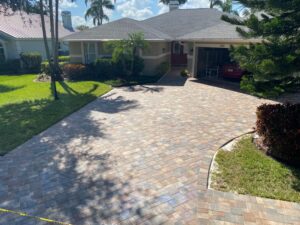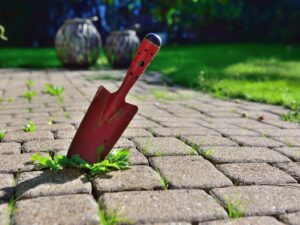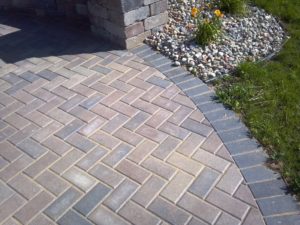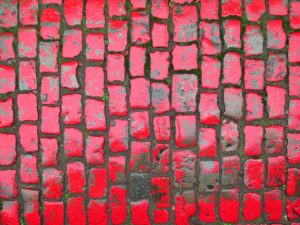Mold and mildew might be an eventual problem at home – particularly outdoors, where shady, damp spots become the perfect stimulus for them to breed and grow. On the sidewalks, many paving stones (as well as poured concrete) can be affected by fungi, having their surface stained and posing serious health hazards if left unchecked. With that said, what would be the best sidewalk mold cleaner out there?
Well, in this article, our goal is to give you an answer to that. Thus, we’ll go over some great options that are available on the market, in hopes of helping you solve this issue and prolong the lifetime of your project.
In case you’re facing problems with weed growth, check out this article instead.
Why should I get a sidewalk mold cleaner?
First of all, it’s essential to know why we should get rid of mold as soon as it turns up on the floor.
You see, mold occurs when there’s no direct sunlight shining upon a wet, secluded place. As organic beings, fungi tend to spread out as much as it sees fit, which means that a stained foundation can infect nearby walls over time. With that in mind, mold can also settle indoors – where condensation collects as a result of leaky pipes, for instance, or rainwater that seeps through the window.
As we said, not only is it displeasing to the eye – looking like black or green splotches – but it’s also dangerous, inducing allergies, asthma attacks, and skin irritation to name a few. In other words, mold growth may cause:
- property damage, since it migrates from concrete and natural stones to other construction materials, such as wood, tissue, and plastic;
- health implications, due to the aforementioned reasons;
- maintenance costs, involving cleaning techniques and unit replacements.
Of course, these are all avoidable if you care for your sidewalk regularly. You can learn how to do this with simple techniques here.
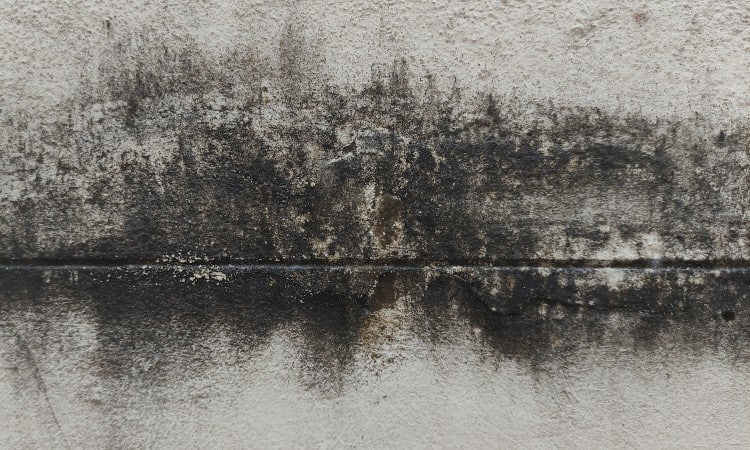
Sidewalk mold cleaner: Your best options
In terms of durability and cost-benefit, some pavers are better than others when it comes to sidewalks.
Concrete, for instance, is the most common hardscape material in American neighborhoods for many reasons, but mold resistance is not one of them. In truth, any porous surface – which includes the majority of paving stones, by the way – is more prone to mold growth due to the little holes that hold water and residue. (You can solve this by sealing your floor, but if you’re here this tip will only be an afterthought.)
Anyway, if there’s mold on your concrete slabs or pavers, don’t worry. Below, we’ve listed a few solutions to help you handle this. As always, just remember to take safety precautions (such as protective gear) before dealing with such chemicals.
Liquid laundry detergent or household bleach
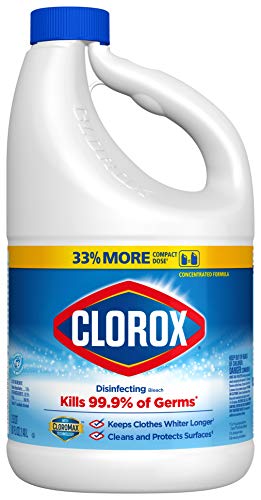
Probably the most effective means of removing black and green mold. Laundry detergent and bleach will kill it down to the root – and mixing these solutions with a gallon of water is the way to go.
First, you have to clean the whole area with a hose – removing the bulky spots. Then, upon applying the solution on the floor, use a sponge or a brush to get to the embedded mold. This will stop it from growing again, so make sure to get every little corner checked for the best possible outcome.
When you’re finished, it’s time to dry the sidewalk, and we recommend placing a fan outside – because it might quicken the process a lot, especially on cloudy days.
Zep
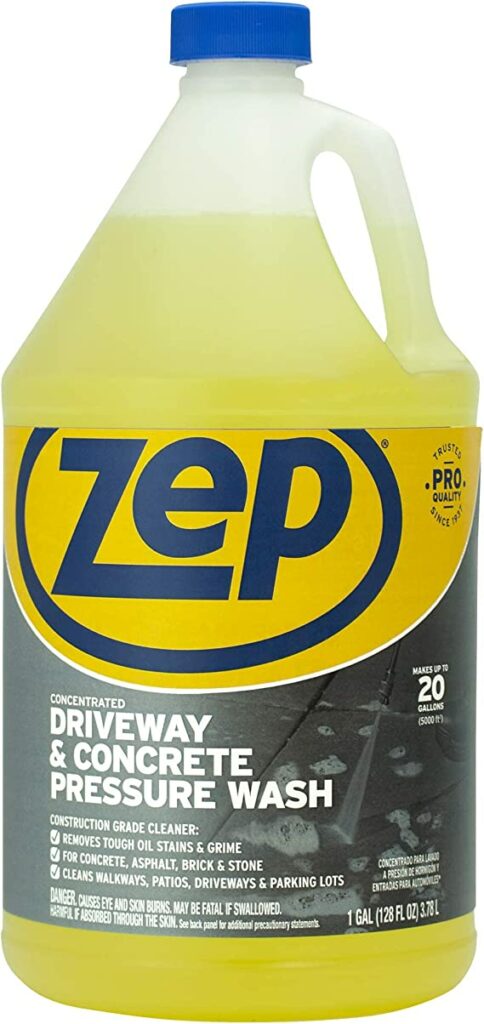
This yellowish product is specially formulated to remove mold from concrete – and better yet if used with a pressure washer. It also helps removing grease, oil and tyre marks from your driveway, which is a win-win.
For the best effects, simply apply 6 ounces of Zep to 1 gallon of water. For heavier stains, 25 ounces per gallon might do the job. Use a cleaner applicator and allow it to soak in for 10 minutes – then use a rinse nozzle to remove.
Zep is safe for most types of pavers – including concrete, brick, and natural stones. Additionally, asphalt is not damaged by it, which makes for a more straightforward approach when cleaning wide outdoor spaces.
RMR-141
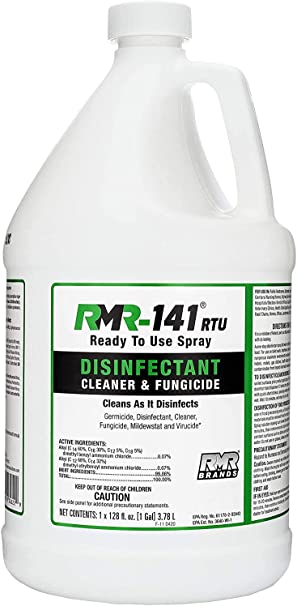
With an ammonia-driven formula (and chlorine-base ingredients), RMR-141 is perfect to kill mold, coming in a convenient, handheld spray bottle to further ease the physical effort when cleaning. For that reason alone, it’s an amazing choice for outside and inside pavers alike, removing 99% of bacteria while at it.
Unlike other commercial cleaners, this one leaves a citrus scent whenever it’s used and doesn’t release harmful fumes or harsh odors. It’s as simple as it gets, too: just spray RMR-141 on the mold and wipe it off with a clean cloth.
White vinegar
Think of this as a last resort only. Vinegar is really good for household tasks because of its abrasive properties, but that can also backfire – possibly fading your pavers along the way. If we’re talking about poured concrete, it’s a safer bet, but try not to rely on vinegar too much.
With that said, white vinegar is the one you must aim for. Create a solution that is three parts water and one part vinegar, and then apply it onto the surface with a mop and a brush, ensuring all its pores are penetrated. After letting it soak for some minutes, use a garden hose to wash off the leftovers.
Mold x efflorescence
To finish off, don’t confuse mold with efflorescence – which is a white, salty film that appears on a newly-installed concrete project after a few weeks. Unlike mold, this is perfectly normal.
Efflorescence is also called “new building bloom”. This effect happens when salts and other water-dispersible elements inside the concrete naturally come to the surface after being laid on the ground. This process can slowly occur until all these salts and elements are expelled, and that can happen from 60 days to an entire year.
Therefore, when it stops, it’s time to seal your floor (read all about this process here), preventing any outside particles from ever settling into it in the first place. This, of course, includes mold and mildew.
S&S Pavers can give you a hand
So, have we solved your problem? If you’re still struggling to get rid of the mold, maybe you need special equipment to achieve the desired results.
Over 12 years in the hardscape business, our team has dealt with many homeowners in many different situations – and we know how tricky heavy maintenance might be. As we said, we always recommend hiring a professional in your area whom you can trust, because dealing with mold in improper ways can compromise your floor beyond repair.
With that said, if you happen to be around our area of activity, the Sarasota and Manatee counties, in Florida, why not call us to help you out?
You can contact us any time for a free estimate of our services! Call us right now at 941-773-3098 or email us at sales@sspavers.com. We would be more than happy to help you with any hardscape needs – including supply, installation, and maintenance services.

